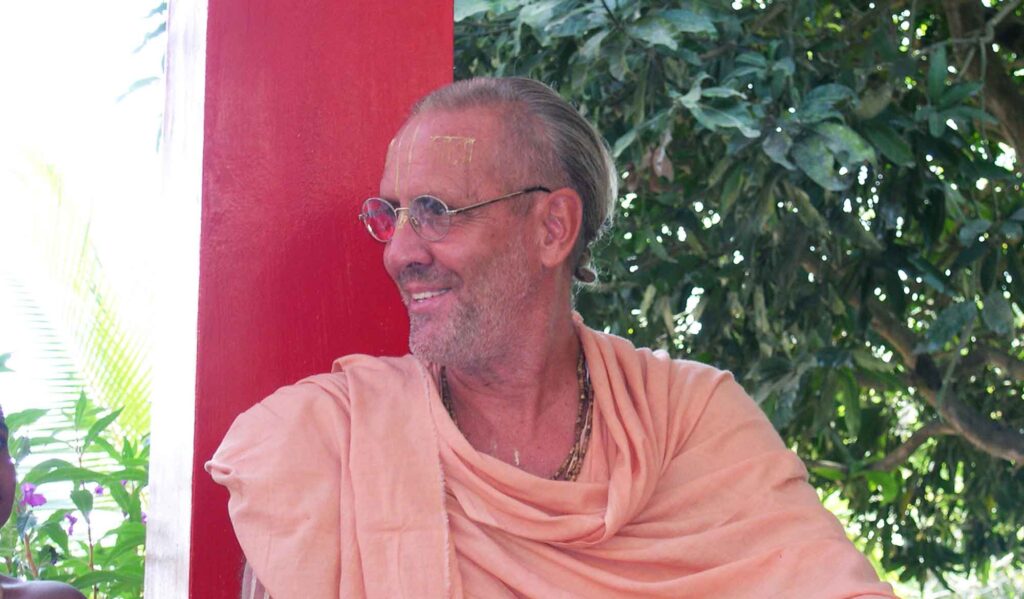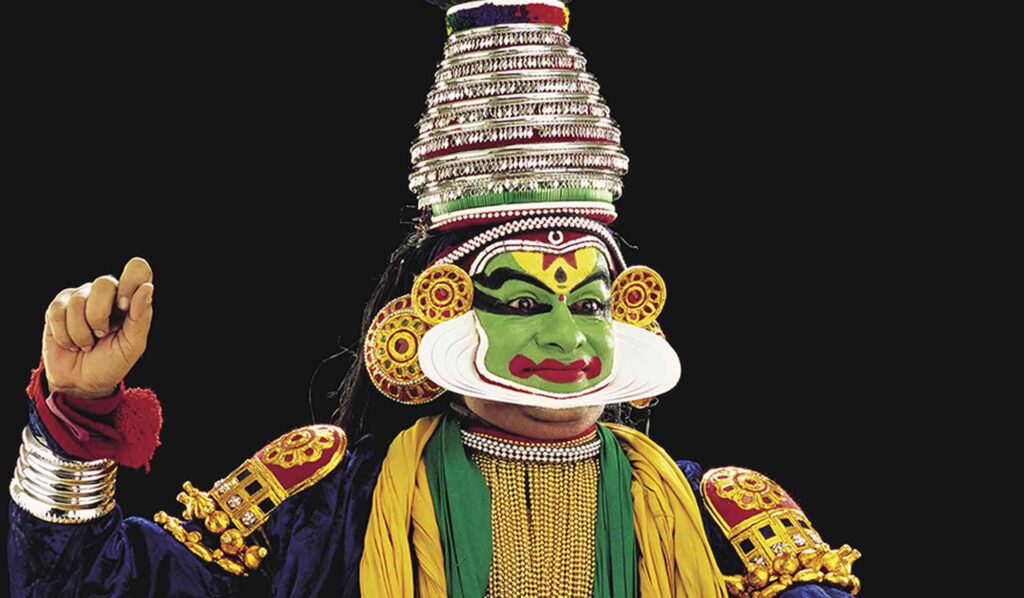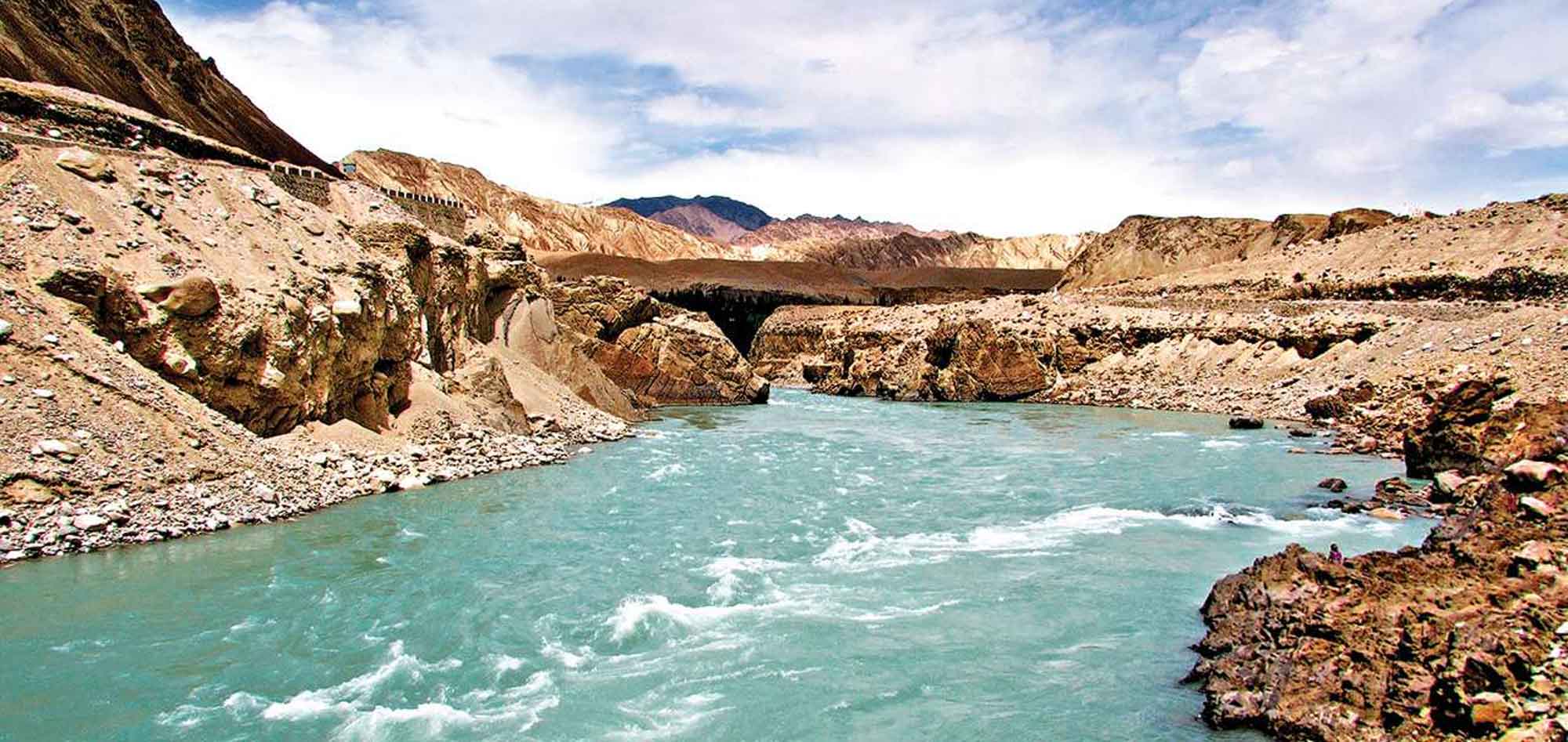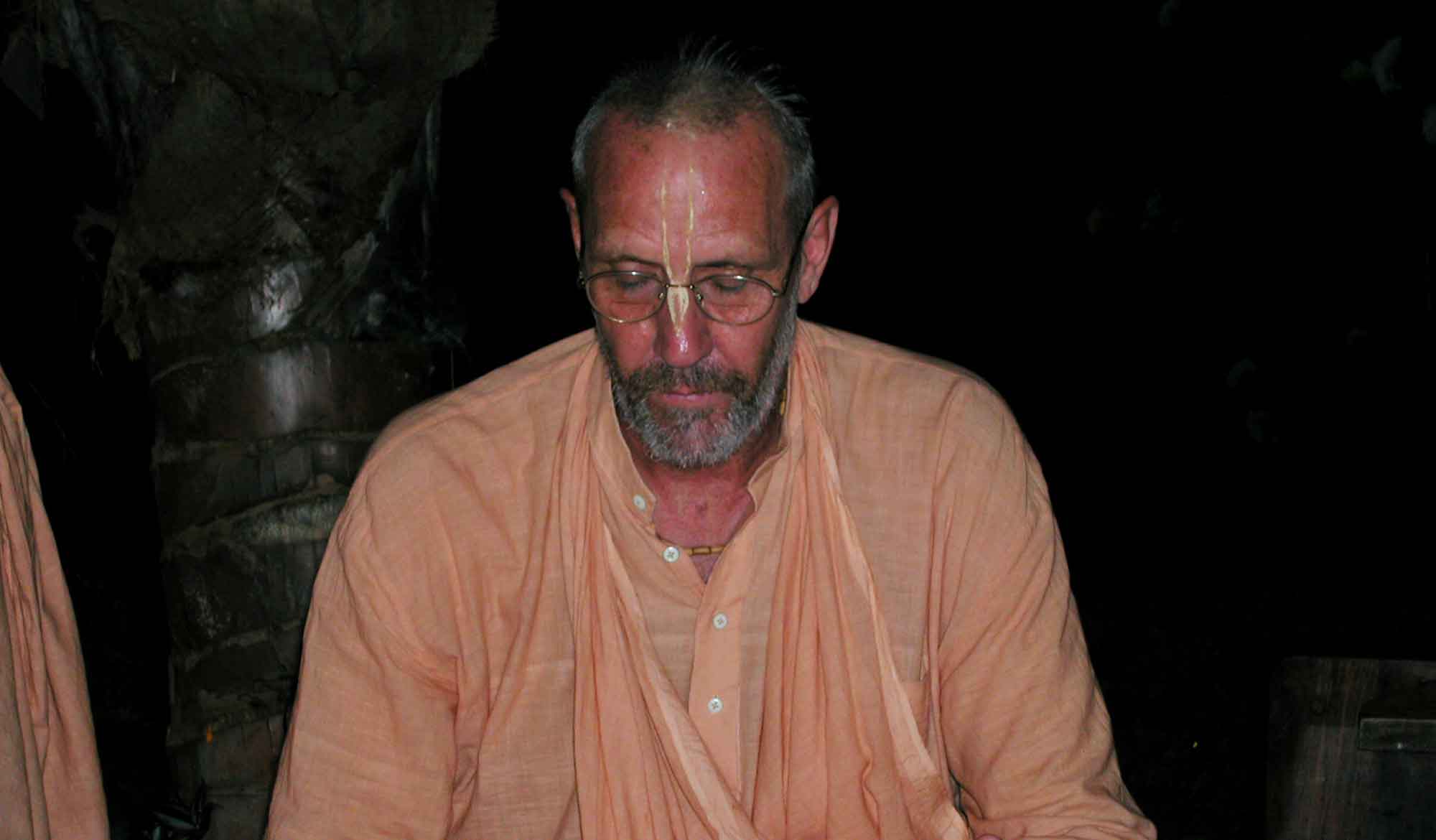by Swami B.G. Narasingha
“Kārttika - a Special Month for Devotion”, written by Śrīla Narasiṅgha Mahārāja, was first published in ‘Back To Godhead’ magazine on January 21st,1986. In this article, Mahārāja explains the significance of Kārttika for Gauḍīya Vaiṣṇavas and especially for the followers of Śrīla A.C. Bhaktivedānta Swami Prabhupāda.
After the scorching heat of India’s summer season. The peacocks sing and flit parrots bathe in the rain. The crops flourish and the cows become jubilant feeding on fresh grasses Swans and cranes move peacefully among lotuses in the full reservoirs.
As autumn approaches. a festive atmosphere pervades the entire country and many celebrations are held. Some are traditional, like Divālī, the Hindu new year. Some are ceremonial like Kojagari, the harvest festival. And sonic are religious. like Rāma-vijaya, which commemorates Lord Rāma’s Victory over Rāvaṇa but of all the many festivals, Kārttika is the best. Kārttika or the festival of offering lamps in file temples of Lord Kṛṣṇa, lasts the entire month of Dāmodara (Oct–Nov).
Although the Kārttika festival is observed in all temples of Lord Kṛṣṇa throughout India the greatest concentration of Kārttika celebrations takes place in Vṛndāvana the holy land of Lord Kṛṣṇa’s childhood pastimes. The Kārttika Festival is observed for one month continuously and Kṛṣṇa devotees come from all over India and from around the world to take part. In the evenings devotees gather in Vṛndāvana’s many temples to sing devotional songs chant Hare Kṛṣṇa. and offer burning lamps before the deity. The devotees realize that Kṛṣṇa is the Supreme Personality of Godhead and is not in need of their offering. The offerings benefit the devotees, who are awakening their natural love for God.
Lord Kṛṣṇa is eager to accept the devotees’ love and devotion. Love means to give, and the process of giving offerings to the Deity helps one develop love for God. Kṛṣṇa says in the Bhagavad-gītā that He accepts offerings made by His devotees.
Another devotional practice of Kārttika is līlā-smaraṇam, remembering the transcendental pastimes of Lord Kṛṣṇa. Devotees know that to think of Kṛṣṇa always is the highest perfection of life, and during Kārttika they especially meditate on Kṛṣṇa’s childhood pastimes, specifically the dāmodara–līlā. In the Dāmodara pastime, the unconquerable Supreme Lord shows that he allows Himself to be conquered by the love of His devotees. The Śrīmad Bhāgavatam narrates Kṛṣṇa’s dāmodara–līlā.
One day, the story goes, Kṛṣṇa’s mother, Yaśodā was churning butter, when Kṛṣṇa appeared on the scene demanding to be nursed. Yaśodā stopped her work, took her son on her lap, and began feeding Him milk from her breast. Suddenly the milk on the stove began to boil over, and Yaśodā hurriedly put Lord Kṛṣṇa aside and ran to the kitchen. Lord Kṛṣṇa, however, became very angry and immediately broke the butter pot and began to eat the butter. He even went into the courtyard and began distributing butter to the monkeys.
When Mother Yaśodā returned from the kitchen and found the broken butter pot, she could understand that this was the work of her naughty son. She decided to punish Him, and she began to search. When she at last found Him, He was in the courtyard feeding butter to the monkeys. Fearfully He was looking this way and that. He saw His mother coming toward Him with a stick in her hand, so He began to run. With great difficulty Yaśodā caught Lord Kṛṣṇa, who by now was on the point of crying. Yaśodā could understand that Kṛṣṇa was unnecessarily afraid, so she threw away her stick and decided to punish Kṛṣṇa by binding Him around the waist with a rope.
Of course, it isn’t possible for anyone to bind the Supreme Personality of Godhead, so when Yaśodā went to tie the knot, the rope was two inches too short. She returned to the house for more rope, but again it was too short. Then she joined together all the available rope, but again it was too short. She was smiling, but astonished.
Lord Kṛṣṇa, the Supreme Personality of Godhead, was playing the part of an ordinary child. No one is able to bind the Supreme Lord; yet the Lord submits to the love of His pure devotees. Appreciating the labour of His mother, Kṛṣṇa agreed to be bound by ropes.
By remembering this childhood pastime of Kṛṣṇa the pilgrims at the Kārttika festival remember that the goal of devotional service is to develop pure love for Kṛṣṇa.
The Kārttika month offers a special festival for the members and friends of the International Society for Kṛṣṇa Consciousness (ISKCON), for during Kārttika ISKCON commemorates the passing of its Founder-ācārya, His Divine Grace A.C. Bhaktivedānta Swami Prabhupāda. In Vṛndāvana, on November 14, 1977, Prabhupāda gathered his disciples by his side, and with perfect humility, purity, and devotion he left the mortal world to reside with Kṛṣṇa in His eternal abode, Goloka Vṛndāvana. Each year a festival is held on the anniversary of Prabhupāda’s passing.
The “Prabhupāda Festival” attracts devotees from around the world. Many distinguished Vṛndāvana residents, mindful of Prabhupāda’s unparalleled work, also attend. The day is filled with remembrance of Prabhupāda. Throughout the morning, Prabhupāda’s disciples, friends, and followers glorify his transcendental qualities and activities. At noon devotees perform a traditional ārati ceremony before Prabhupāda’s samādhi (tomb), and more than one hundred eight vegetarian dishes are offered. Throughout the ārati devotees chant the names of Kṛṣṇa and Prabhupāda.
In the evening, the disciples of Prabhupāda gather in his rooms and, surrounding the bed from which he imparted his last instructions, speak about their spiritual master until late in the night. In the evening atmosphere of Vṛndāvana, the mood of separation from Prabhupāda intensifies. By remembering him and his instructions, however, his disciples perceive his presence within their hearts.
In the days that follow the Prabhupāda festival, the Kārttika celebrations continue until the last day of the month, when everyone returns home satisfied and spiritually enriched. The Padma Purāṇa states, “Lord Kṛṣṇa may offer liberation or material happiness to a worshiper, but after executing devotional service, particularly in Vṛndāvana during the month of Kārttika, the devotee wants only to attain pure devotional service to the Lord.”
More Articles by Swami B.G. Narasingha
The Sacred River Sindhu/Indus
‘The Sacred River Sindhu/Indus’ was posted by Swami B.G. Narasingha on his blog, narasingha.net, on October 2nd, 2011. In this short article, Narasingha Maharaja explains the significance of the River Sindhu and his pilgrimage to it. This article was later expanded into a bigger article called ‘Sindhu River – How India Got Her Name.’
Instructing the Guru
This article “Instructing the Guru” was written in April 2018 by Śrīla Narasingha Mahārāja who answers a question concerning a previous article wherein a Vaiṣṇavī writes a letter to her dīkṣā-guru and explains to him about the importance of śikṣā. In response, a question was raised by a devotee about the etiquette of a disciple instructing her guru.
The Atomic Ray – From Uniform Consciousness to Individual Conscious Units
In “The Atomic Ray - From Uniform Consciousness to Individual Conscious Units” written in 1996 Śrīla Narasiṅgha Mahārāja discusses the constitutional position of the jīva, according to Bhaktivinoda Ṭhākura and Śrī Caitanya-caritāmṛta.













